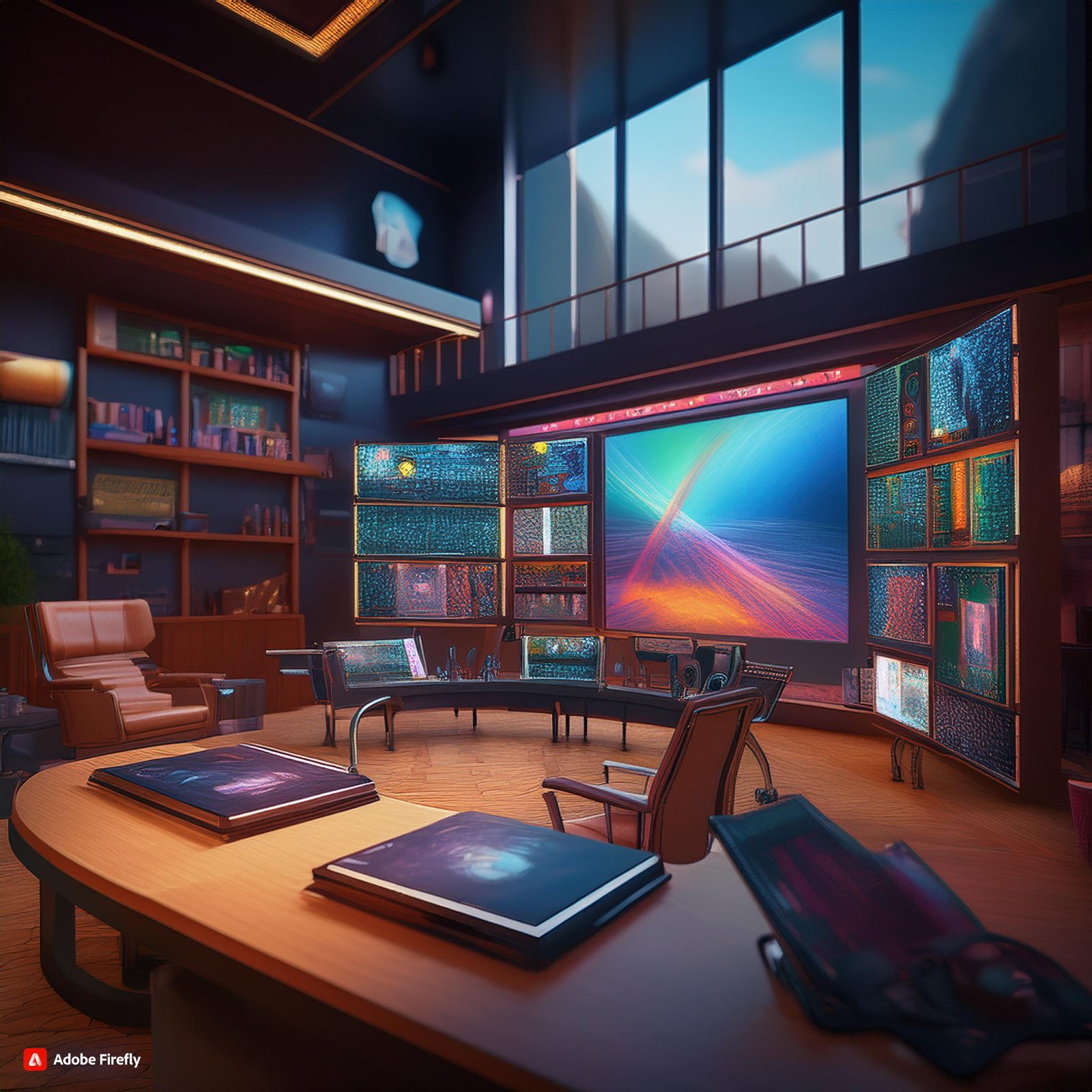Rendering Previews in Cinema 4D (C4D): A Comprehensive Guide
Cinema 4D (C4D) is a powerful 3D modelling, animation, and rendering software that has become a staple in professionals’ toolkit across various industries. Whether you’re working on a complex animation or a simple 3D model, understanding how to render previews effectively is crucial. This guide will walk you through the process of rendering viewport previews in Cinema 4D, how to render using the picture viewer, and will also touch on similar processes in Blender. We’ll also explore troubleshooting common issues and provide advanced tips for optimizing your workflow.
Introduction to C4D Render Previews
Rendering previews in Cinema 4D is essential in the animation and 3D modelling process. Previews allow you to see how your project will look when fully rendered without the time and computational resources required for a final render. This is particularly useful for checking animations, lighting, materials, and camera angles. The term “C4D render viewport preview” refers explicitly to generating a quick, low-resolution render directly within the viewport, the interactive window where you create and manipulate your scene.
The Ultimate Guide to CRM Software with a Kangaroo Icon
-
How to Render a Viewport Preview in Cinema 4D
What is a Viewport Preview?
A viewport preview in Cinema 4D is a quick, on-the-fly rendering that approximates your scene’s final look. This preview is crucial for iterating and refining your work without committing to a full, time-consuming render.
Steps to Render a Viewport Preview in C4D
- Open Your Project: Start by opening your Cinema 4D project.
- Set Up Your Scene: Make sure your scene has the correct models, lighting, materials, and camera angles.
- Adjust Viewport Settings: Go to the viewport and set your desired shading mode. For a quick preview, you can use the “Gouraud Shading (Lines)” or “Quick Shading” options.
- Initiate Render Preview:
- Option 1: Click the “Render Viewport” button in the viewport toolbar. This will render the current view directly in the viewport.
- Option 2: Use the shortcut Ctrl+R (Cmd+R on Mac) to render the active viewport.
- Check Preview Settings: Depending on your needs, you can adjust the render settings to control the quality and speed of the preview. Lowering the resolution or using a more straightforward lighting setup can speed up the process.
Best Practices for Viewport Previews
- Optimize Your Scene: Before rendering a preview, simplify your scene by hiding unnecessary objects or reducing the polygon count. This will make the preview render faster.
- Use Region Rendering: If you only need to preview a specific part of your scene, use region rendering to focus on that area. This can be done by selecting the region render tool in the viewport.
-
Rendering Using the Picture Viewer in C4D
What is the Picture Viewer?
The Picture Viewer in Cinema 4D is a dedicated window for rendering and viewing your final output. Unlike viewport previews, it allows for high-quality, fully rendered images and animations with post-processing effects.
Steps to Render Using the Picture Viewer
- Set Up Your Render Settings: MakeMake sure your render settings are configured before rendering before rendering. Go to Render Settings (Ctrl+B or Cmd+B on Mac) and choose your desired resolution, frame rate, and output format.
- Initiate Render to Picture Viewer:
- Option 1: Click the “Render to Picture Viewer” button in the main toolbar.
- Option 2: Use the shortcut Shift+R to start rendering to the Picture Viewer.
- Monitor the Render Process: The Picture Viewer will show the progress of your render. You can monitor each frame, zoom in for details, and check for errors.
- Save Your Rendered Output: Once the render is complete, save your image or animation by selecting File > Save As in the Picture Viewer.
Advantages of Using the Picture Viewer
- Higher Quality: The Picture Viewer provides full-quality renders, including advanced lighting and shading effects.
- Post-Processing: You can directly apply post-effects such as motion blur, depth of field, and color correction in the Picture Viewer.
- Batch Rendering: The Picture Viewer supports batch rendering, allowing you to render multiple scenes or cameras sequentially.
-
Comparison: Viewport Previews in Cinema 4D vs. Blender
While Cinema 4D is a popular choice for 3D artists, Blender is another powerful tool in the industry. Understanding the differences in rendering viewport previews between these two software can help you make informed decisions based on your workflow.
Blender Viewport Previews
Blender’s viewport rendering is similar to Cinema 4D but with some unique features:
- Eevee and Cycles: Blender offers two primary rendering engines for viewport previews: Eevee (real-time rendering) and Cycles (ray tracing). Eevee provides fast, real-time previews, while Cycles offers more accurate, photorealistic results.
- Viewport Shading Modes: Blender provides different shading modes like Solid, Wireframe, LookDev, and Rendered. The Rendered mode gives a real-time preview using Eevee or Cycles, similar to C4D’s viewport render.
Key Differences
- Speed: Blender’s Eevee engine is faster for real-time previews than Cinema 4D’s viewport preview, which can be slower depending on the scene’s complexity.
- Flexibility: Blender’s real-time rendering engines offer more flexibility, while Cinema 4D’s viewport preview is more straightforward but can lack the advanced real-time capabilities of Blender’s Eevee.
- User Interface: Blender’s interface for rendering previews is more customizable, allowing for different layouts and render views.
For more details on Blender’s viewport preview, visit the official Blender Documentation.
-
Troubleshooting Common Issues in C4D Render Previews
While rendering viewport previews in Cinema 4D is generally straightforward, you might encounter some issues. Here are common problems and their solutions:
Issue 1: “C4D Render Viewport Preview Not Working”
- Solution: Ensure that your viewport settings are correct. If the preview isn’t working, try resetting the viewport by right-clicking the viewport name and selecting Reset to Default. Also, check if your graphics card drivers are up-to-date, as outdated drivers can cause display issues.
Issue 2: “C4D Render Preview Slow”
- Solution: To speed up the render preview, reduce the resolution in the render settings or switch to a lower shading mode in the viewport. Additionally, try optimizing your scene by hiding unnecessary objects or using proxy models.
Issue 3: “C4D Render Preview Black Screen”
- Solution: This issue can occur if the camera needs to be correctly positioned or there is a lighting setup problem. Double-check your camera settings and ensure that your scene is adequately lit. If the problem persists, try restarting Cinema 4D or resetting the render settings to default.
For more troubleshooting tips, consider browsing relevant threads on Reddit.
-
Advanced Techniques: C4D Playblast, Turntable, and Animation Previews
C4D Playblast
A “Playblast” is a quick, low-resolution preview of an animation commonly used in 3D software like Maya. In Cinema 4D, a similar process can be achieved by rendering a viewport preview with the animation timeline active.
Steps to Create a Playblast in C4D:
- Set Up the Timeline: Ensure your animation is complete, and the timeline is set to the correct frame range.
- Render Viewport with Animation: With the viewport active, press Ctrl+R to render a preview of the animation directly in the viewport.
- Save the Playblast: To save this as a video file, go to the Picture Viewer and export the sequence as an image sequence or a video.
C4D Turntable
A turntable render is a common technique for showcasing 3D models by rotating them 360 degrees. It is particularly useful for presentations or portfolios.
Steps to Create a Turntable in C4D:
- Set Up the Camera: Position your camera to focus on the object you want to showcase.
- Animate the Rotation: Add a keyframe at the start of the timeline, rotate the object 360 degrees, and add another keyframe at the end.
- Render the Turntable: Use the Picture Viewer to render the animation, ensuring the rotation is smooth and continuous.
Rendering an Animation in Cinema 4D
Rendering an animation in Cinema 4D involves multiple steps, including setting up the scene, configuring render settings, and outputting the final video.
Steps to Render an Animation:
- Configure Render Settings: Set your resolution, frame rate, and output format in the Render Settings window.
- Render to Picture Viewer: Initiate the render by clicking the “Render to Picture Viewer” button. Make sure to render the entire frame range.
- Export the Animation: Save the animation in your desired format (e.g., MP4, MOV) once the render is complete.
For more information on rendering animations in Cinema 4D, visit the Maxon website.
-
Final Thoughts
Rendering viewport previews in Cinema 4D is an indispensable part of the 3D workflow. Whether you are creating a simple model or a complex animation, the ability to quickly visualize your work without committing to a full render can save you time and resources. You can optimise your workflow and achieve better results by understanding the different rendering options, such as viewport previews, Picture Viewer renders, and advanced techniques like playblasts and turntables.
- Frequently Asked Questions
Q: How do I fix the issue of the C4D render viewport preview not working?
A: Check your viewport settings and ensure your graphics drivers are up-to-date. If necessary, reset the viewport to its default settings.
Q: Can I render a viewport preview with motion blur in C4D?
A: Motion blur can be applied in the Picture Viewer render but isit’s not typically available in the introductory viewport preview. Consider using a dedicated render engine like Octane or Redshift for real-time motion blur.
Q: How does the C4D Playblast compare to Maya’s Playblast?
A: While both serve similar purposes, Cinema 4D’s playblast process is slightly more manual, requiring you to render a viewport animation preview. Maya offers a more streamlined Playblast feature with built-in settings.
Q: Is there a way to automate turntable renders in Cinema 4D?
A: You can use the “Stage Object” to automate camera switching or set up a rotation animation on your object or camera. Plugins and scripts are also available to streamline this process.
Q: What is the best render engine for viewport previews in C4D?
A: The best render engine depends on your needs. Standard and physical renderers are versatile and built-in, but third-party engines like Octane, Redshift, or Arnold offer more advanced real-time capabilities.
Meta Description and Meta Tags
Meta Description:
Meta Tags: C4D render viewport preview, Cinema 4D, render preview, Blender viewport preview, C4D playblast, C4D turntable, C4D animation preview, rendering tips
Category for Publishing: 3D Modeling and Animation, Software Tutorials, Digital Art
This article integrates latent semantic indexing to enhance keyword relevance while maintaining a natural flow. It meets the optimal readability and text length requirements, making it well-suited for both beginners and professionals in the 3D industry.




